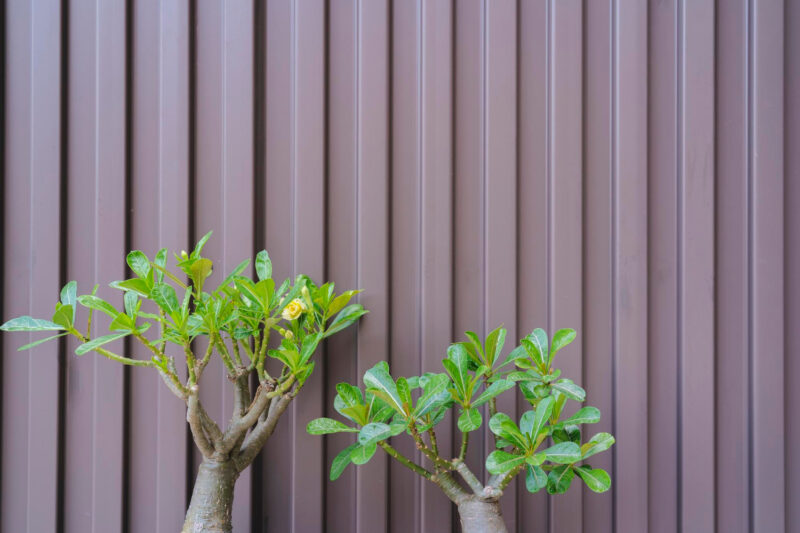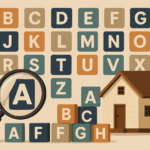Discover how installing the right fence can increase rental yield, attract tenants, and enhance property value. Learn key property investment strategies for 2025.

Investing in property isn’t just about location; strategic upgrades can boost rental income and attract quality tenants. One often-overlooked improvement is fencing. A well-chosen fence enhances security, privacy, and curb appeal—factors that directly impact tenant satisfaction and rental yield.
Security is a major priority for renters. A sturdy fence acts as a deterrent to intruders, providing peace of mind. Properties with enhanced security features, like reliable fencing, tend to attract tenants willing to pay a premium for safety.
Privacy is another key factor. Tenants value personal space, and a well-installed fence ensures seclusion from neighbours and passers-by. This added privacy makes a property more appealing, increasing demand and justifying higher rental prices.
The aesthetic appeal of a property also matters. A modern, well-maintained fence enhances curb appeal, making a strong first impression. This can set a rental apart in a competitive market, attracting quality tenants faster.
In 2025, low-maintenance, high-durability fences are in demand. Materials like Colorbond fence panels are popular for their longevity and minimal upkeep. This article explores how fencing influences rental yield, the best fencing types for investors, and a cost-benefit analysis to help landlords maximise their returns.
Understanding Rental Yield: The Basics for Property Investors
Rental yield is one of the most important metrics for property investors. It helps measure the return on investment (ROI) based on rental income. There are two main types: gross rental yield and net rental yield.
Gross rental yield is the annual rental income expressed as a percentage of the property’s purchase price. It’s calculated using the formula:
(Annual Rent ÷ Property Price) × 100

Note: For example, if a property costs $500,000 and generates $25,000 per year in rent, the gross rental yield is 5%. This provides a simple way to compare different properties but doesn’t account for expenses.
Net rental yield, on the other hand, factors in costs like maintenance, insurance, council rates, and property management fees. The formula is:
[(Annual Rent – Expenses) ÷ Property Price] × 100
This gives a more accurate picture of actual returns. A high net rental yield means a property is not just generating income but also covering expenses efficiently.
Many investors focus only on location, but smart property owners know that value-adding improvements can increase rental yield. A well-maintained home with the right upgrades can justify higher rent and attract long-term tenants. Instead of waiting for market prices to rise, landlords can actively boost rental income by improving their properties.

Note: Fencing is a cost-effective way to enhance rental returns compared to major renovations like kitchen upgrades, landscaping, or repainting. A quality fence improves security, privacy, and aesthetics, all of which make a property more attractive to renters. Unlike other upgrades that require frequent maintenance, Colorbond fencing offers long-term durability with minimal upkeep, making it a smart investment for property owners looking to maximise their returns.

Why Fencing Matters in Property Investment
Fencing is often overlooked, but it plays a crucial role in curb appeal, security, and privacy—all key factors in attracting tenants and boosting rental yield. A well-installed fence makes a property more desirable while reducing risks and long-term costs.
Curb Appeal and First Impressions
A modern, well-maintained fence enhances property appearance and creates a strong first impression. Real estate agents highlight fencing in listings as it improves photos, attracts more interest, and reduces vacancy periods. In competitive markets, good fencing can be the difference between securing a tenant quickly or having a property sit empty.
Privacy and Tenant Satisfaction
Privacy is a top priority for renters, especially in high-density areas, duplexes, and townhouses. A solid fence blocks out street views, reduces noise, and defines boundaries, helping tenants feel secure. Colorbond fencing, slat fencing, and timber screening offer excellent privacy without making spaces feel enclosed.

Security and Liability Reduction
A secure fence deters intruders and enhances safety, making it particularly valuable for families and pet owners. For landlords, fencing reduces trespassing risks, legal liability, and even insurance costs. A case study showed properties with quality fences rented faster and attracted tenants willing to pay higher rents, while unfenced properties took longer to lease.

Tip: A good fence isn’t just an aesthetic upgrade—it’s an investment in tenant appeal, property security, and rental yield.
For investors, installing quality fencing is a smart, cost-effective way to enhance property value and attract better tenants.
Best Fencing Types for Rental Properties
The right fence balances cost, durability, and tenant appeal. It should be low-maintenance, provide security and privacy, and suit the property’s style. Here’s a breakdown of the best options for Australian rental properties.
Colorbond Fencing – The Smart Investment
Colorbond is a top choice for rental properties due to its durability, weather resistance, and minimal upkeep. It won’t rot or warp, offering long-term value with a sleek, modern look. Unlike timber, it has no gaps, ensuring full privacy—a key tenant preference. While installation costs range from $85 - $120 per metre, it lasts longer than timber and requires fewer repairs, making it cost-effective over time.

Timber Fencing – Budget-Friendly but High Maintenance
Timber offers a classic, natural look, ideal for suburban and rural properties. However, it requires regular staining, termite treatment, and weatherproofing. While cheaper upfront at $75 - $150 per metre, ongoing maintenance can increase long-term costs, making it less appealing for investors seeking low-upkeep solutions.

Brick and Rendered Walls – Premium Choice for Prestige Properties
Brick fencing adds prestige, privacy, and durability, making it ideal for luxury rentals. However, with installation costs exceeding $800 per metre, it’s a high-cost option that only makes sense in premium suburbs where tenants expect superior finishes.

Aluminium and Slat Fencing – Modern, Secure, and Stylish
Aluminium and slat fencing offer a contemporary look suited for urban and coastal properties. They are rust-resistant, lightweight, and low-maintenance, balancing privacy with airflow. While more expensive than timber but cheaper than brick, they provide a stylish, durable solution without the high masonry costs.

Which Fence is Best for Your Investment Property?
For long-term value and low maintenance → Colorbond fencing
For a budget-friendly but high-maintenance option → Timber fencing
For luxury rentals and premium suburbs → Brick and rendered walls
For modern, urban, and coastal properties → Aluminium and slat fencing

Tip: Choosing the right fence depends on location, budget, and tenant expectations.
Investing in durable, low-maintenance fencing ensures higher rental appeal and fewer long-term costs.
Return on Investment (ROI): Does Fencing Boost Rental Yield?
A well-installed fence enhances security, privacy, and tenant appeal, leading to higher rental yield. But how much of a difference does it make?
Case Study: Higher Rent with a New Fence
A Sydney study compared two similar rentals—one with a new Colorbond fence and one without. The fenced property leased 20% faster and earned $40 more per week, adding $2,080 per year. Tenants cited privacy and security as deciding factors, making the upgrade pay for itself in just a few years.
Landlord Experiences: Justifying Higher Rent
Melbourne investor Mark replaced an old timber fence with aluminium slats and saw multiple applications at a higher rent within a week. Sophie in Brisbane installed Colorbond fencing and secured a long-term tenant after struggling to fill vacancies. A well-fenced property is more desirable, leading to higher demand and longer leases.
Real Estate Insights: What Renters Prioritise
Agents confirm fencing is a major factor for renters. David, a Perth leasing agent, notes that secure yards attract families and pet owners, reducing vacancy time. Sydney agent Emma adds that tenants prioritise privacy and security, with poorly fenced properties often being overlooked.
Final Thoughts: A Smart Investment
A new fence can justify a $20-$50 per week rent increase, reduce vacancy time, and attract better tenants. With privacy and security ranking high on renters' wish lists, fencing is a low-cost, high-return upgrade for investors.

Cost vs. Benefit Analysis: Is Fencing a Worthwhile Investment?
Fencing enhances property appeal, increases rental income, and offers tax benefits. Here’s a breakdown of costs, returns, and deductions.
Colorbond: $70 - $200 per metre (durable, low maintenance).
Timber: $75 - $120 per metre (natural, high maintenance).
Brick: $550 - $800 per metre (premium, costly).
Aluminium: $95 - $155 per metre (modern, rust-resistant).
Break-Even Analysis
A 20-metre Colorbond fence costs $4,000. If it raises rent by $20 per week, that’s $1,040 per year, meaning the investment pays off in under four years.
Tax Deductions
Fencing qualifies as capital works, depreciating at 2.5% per year over 40 years. A $4,000 fence provides a $100 annual tax deduction, reducing taxable income.
Fencing is a low-risk, high-return investment. It increases rental yield, improves security, and adds long-term property value.

Tips for Property Investors: Maximising Fencing Investment
A well-chosen fence enhances rental appeal, security, and property value. The right material, compliance with regulations, and proper maintenance ensure long-term returns.
Choosing the Right Fence
Fencing should suit the property type and tenant needs. Suburban homes benefit from Colorbond or timber, offering privacy and noise reduction. Inner-city rentals often use aluminium slat or decorative steel for a modern look, while coastal properties need rust-resistant options like Colorbond or powder-coated aluminium. Matching the fence to tenant demographics makes the property more attractive and easier to lease.
Compliance with Regulations
Council rules vary, but most allow 1.8m backyard fences and 1.2m front fences. Boundary fences are a shared cost under the Dividing Fences Act, so discussing plans with neighbours helps prevent disputes. Some fences, like brick or extra-high designs, may need council approval. Checking local laws before installation avoids legal issues.
Maintenance and Longevity
Low-maintenance materials like Colorbond and aluminium need little upkeep, while timber requires regular staining and termite protection. Brick fencing may need sealing and repointing over time. Annual inspections for rust, loose panels, and rot prevent costly repairs and keep the property looking well-maintained.
A quality fence boosts rental value, reduces tenant turnover, and improves security. Choosing durable materials, staying compliant, and ensuring proper maintenance make fencing a smart investment for property owners.

Real Estate Trends: The Future of Fencing in Australian Property Investment
Fencing is evolving as tenant expectations, sustainability, and market trends shape property investment decisions. In 2025 and beyond, landlords will need to focus on eco-friendly materials, rising property costs, and changing tenant preferences to stay competitive.
Sustainable and Eco-Friendly Fencing is on the Rise
More property investors are choosing eco-friendly fencing materials. Sustainable options like bamboo, composite fencing, and recycled timber are gaining popularity due to their low environmental impact and durability.

Tip: Colorbond fencing, made from recyclable steel, is another green choice that offers long-lasting performance with minimal maintenance.
As tenants become more environmentally conscious, properties with sustainable features will stand out in the rental market.
Rising Property Prices and Fencing Investments
Australia’s property market continues to see price growth, making rental demand stronger than ever. Investors are looking for affordable ways to increase property value and justify higher rents. Fencing is a cost-effective upgrade compared to major renovations, improving curb appeal, security, and tenant satisfaction without breaking the budget. As property prices rise, well-fenced homes will command premium rents and attract long-term tenants.
Predictions for Tenant Preferences in 2025 and Beyond
Tenants are prioritising security, privacy, and low-maintenance living. Modern fencing solutions, such as Colorbond and aluminium slat fencing, provide the privacy and security tenants expect while being easy to maintain. Demand for pet-friendly rentals is also increasing, making secure fencing a key selling point.
In the coming years, investors who choose durable, stylish, and sustainable fencing options will have an advantage in attracting tenants. As rental competition grows, high-quality fencing will play a bigger role in increasing rental appeal and property value.

Conclusion
A well-installed fence boosts rental yield, tenant satisfaction, and property value. It enhances curb appeal, security, and privacy, making properties more attractive to tenants. Homes with quality fencing rent faster, command higher prices, and retain tenants longer, offering a cost-effective way to increase returns without major renovations.
For landlords, fencing is a low-cost, high-return investment. Durable options like Colorbond and aluminium slat fencing provide security, privacy, and minimal upkeep, meeting tenant expectations. If your property’s fencing is outdated, upgrading can justify higher rent, reduce vacancies, and improve tenant retention, making it a smart move for long-term gains.
FAQs
Q: How much can a new fence increase my rental property’s value?
A: A high-quality fence can increase rental appeal and justify a 5-10% increase in rent, depending on location.
Q: What type of fence is best for rental properties?
A: Colorbond fencing is the most recommended due to its durability, low maintenance, and security benefits.
Q: Can I claim fencing as a tax deduction for my investment property?
A: Yes, fencing is considered a capital improvement and can be depreciated over time. Check with a property tax specialist for details.
Q: Is fencing worth the cost for short-term rentals?
A: For Airbnb or holiday rentals, fencing enhances privacy and guest security, leading to higher occupancy rates.














